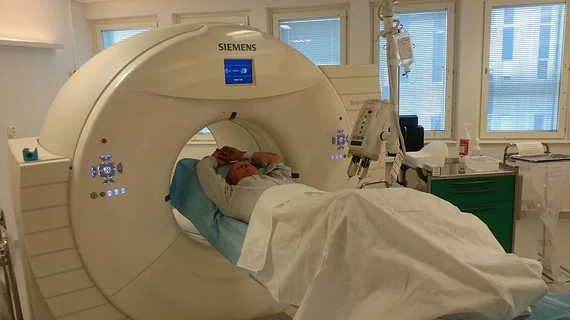PET improves patient selection for radionuclide therapy
Researchers have found that gallium-68 (Ga-68) dotatate PET/CT is a more effective tool for finding candidates for peptide receptor radionuclide therapy (PRRT) than traditional methods, sharing their findings in the Journal of Nuclear Medicine.
The selection of such patients is typically based on a Krenning score derived through 111In-pentetreotide scintigraphy. However, researchers with several California-based academic institutions learned that scores deduced using PET/CT were “significantly” higher and more accurately able to detect patients who meet the requirements for PRRT.
Investigators said the findings are especially notable for patients who have lesions of less than 2 centimeters. That’s because the study proved that Krenning scores for such small-volume tumors were “markedly” higher when derived by Ga-68 dotatate PET/CT versus 111In-pentetreotide imaging. This means patients who could not previously qualify for PRRT would now be eligible.
Krenning scores are calculated based on nuclear imaging used by doctors to make a quantitative estimate of the expression of somatostatin receptors (SSTR) in patients with neuroendocrine tumors.
“The higher the Krenning score, the higher the predicted uptake of the targeted therapy,” Thomas A. Hope, MD, associate professor of radiology at the University of California, San Francisco, noted in a prepared statement.
The retrospective study included 150 patients who doctors suspected to have neuroendocrine tumors. Subjects underwent both Ga-68 dotatate PET/CT and 111In-pentetreotide imaging within one week. Researchers then analyzed all imaging studies and graded them with a Kenning score tied to the lesion with the highest uptake. Krenning scores were compared with the tumor burden lesion size and maximum standardized uptake value.
They determined that based on the Krenning score of each patient, the detection of SSTR-positive disease was 23% for 111In-pentetreotide planar imaging, 38% for single photon emission CT and 72% for Ga-68 dotatate PET/CT.

